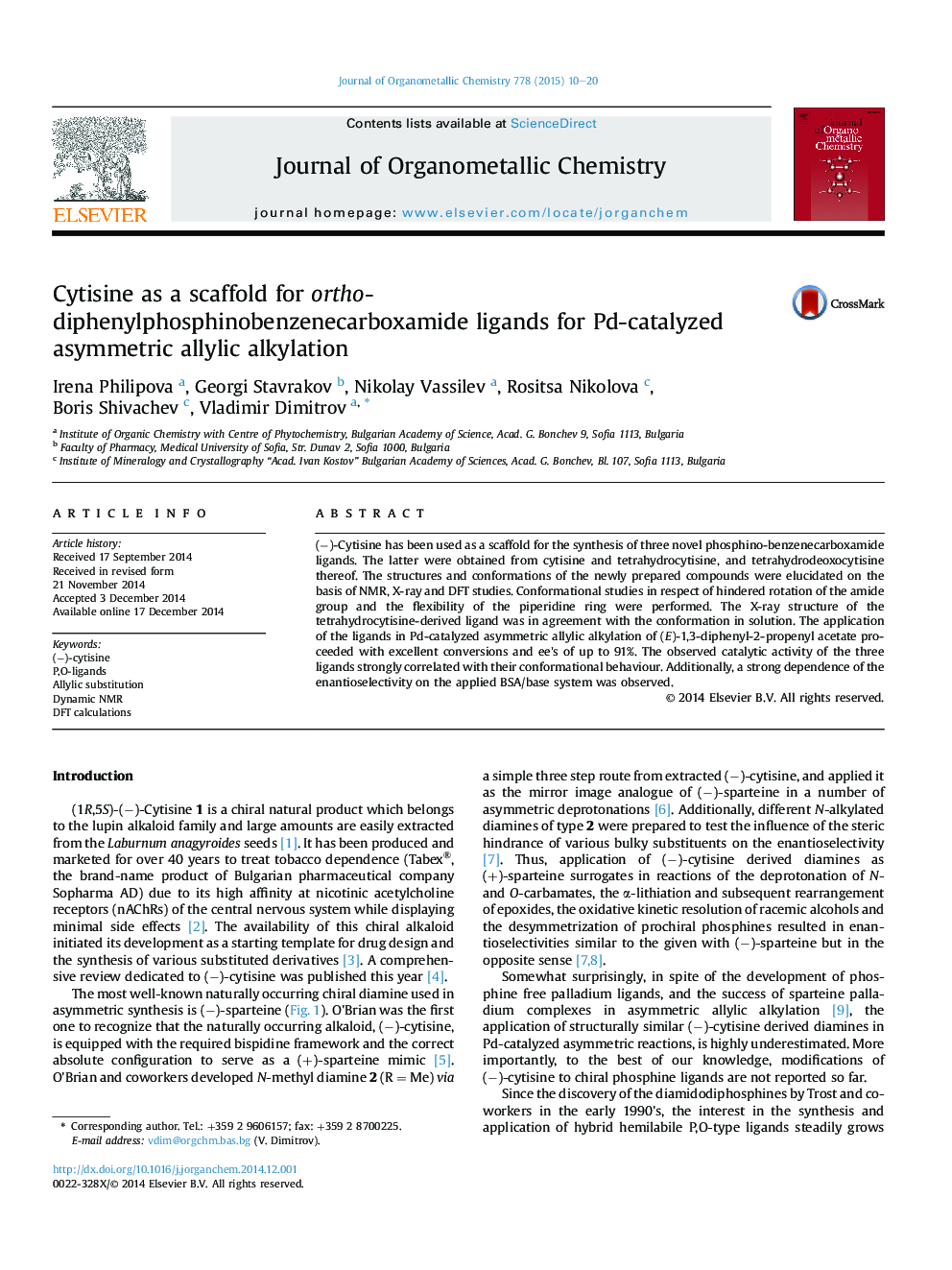| کد مقاله | کد نشریه | سال انتشار | مقاله انگلیسی | نسخه تمام متن |
|---|---|---|---|---|
| 1321003 | 1499864 | 2015 | 11 صفحه PDF | دانلود رایگان |
• P,O-ligands based on the (−)-cytisine scaffold were synthesized.
• Conformational behaviour within cytisine framework was studied by NMR, X-ray diffraction and DFT methods.
• Catalytic activity of the P,O-ligands in Pd-catalyzed asymmetric allylic alkylation was evaluated.
• Complex formation of the ligands with palladium was studied by NMR spectroscopy.
• The enantioselectivity strongly depends on the conformational behaviour of the ligands.
(−)-Cytisine has been used as a scaffold for the synthesis of three novel phosphino-benzenecarboxamide ligands. The latter were obtained from cytisine and tetrahydrocytisine, and tetrahydrodeoxocytisine thereof. The structures and conformations of the newly prepared compounds were elucidated on the basis of NMR, X-ray and DFT studies. Conformational studies in respect of hindered rotation of the amide group and the flexibility of the piperidine ring were performed. The X-ray structure of the tetrahydrocytisine-derived ligand was in agreement with the conformation in solution. The application of the ligands in Pd-catalyzed asymmetric allylic alkylation of (E)-1,3-diphenyl-2-propenyl acetate proceeded with excellent conversions and ee's of up to 91%. The observed catalytic activity of the three ligands strongly correlated with their conformational behaviour. Additionally, a strong dependence of the enantioselectivity on the applied BSA/base system was observed.
(−)-Cytisine was used as a scaffold for the synthesis of P,O-ligands, which were applied in Pd-catalyzed asymmetric allylic alkylation. Conformational studies of the ligands were performed by 31P NMR spectra and DFT calculations. The enantioselectivity of the catalytic reaction strongly depended on the conformational behaviour of the ligands.Figure optionsDownload as PowerPoint slide
Journal: Journal of Organometallic Chemistry - Volume 778, 15 February 2015, Pages 10–20
